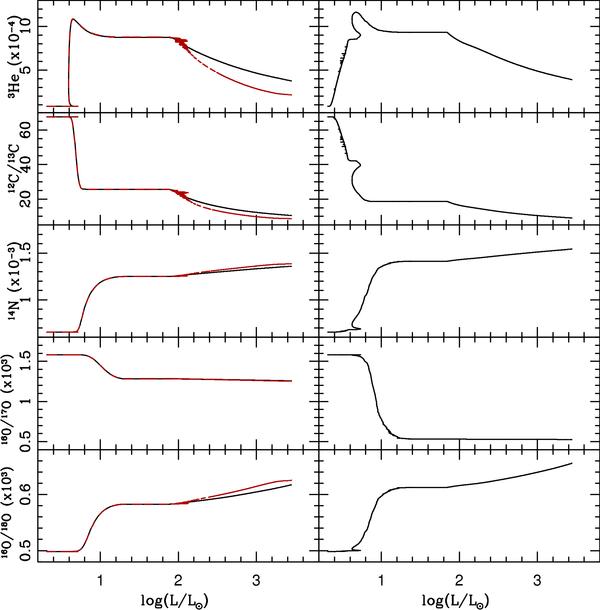Fig. 6

Evolution of the surface abundances of 3He and 14N (in mass fraction) and of the carbon and oxygen isotopic ratios as a function of stellar luminosity for the 1.25 M⊙ models computed without (left) and with rotation (initial rotation velocity of 110 km s-1, right). Thermohaline instablity is accounted for in both cases. In the left panels the black and red lines correspond to Ct = 103 and 104 respectively, while in the right panels Ct = 103. Predictions are shown from the zero age main sequence up to the RGB tip. In the rotating case the first dredge-up starts at lower luminosity and ends at log(L / L⊙) ~ 1 with slightly stronger abundance modifications than in the standard case. Also, thermohaline mixing sets in slightly earlier on the RGB at log(Lc,th/L⊙) ~ 1.9 when rotation is accounted for.
Current usage metrics show cumulative count of Article Views (full-text article views including HTML views, PDF and ePub downloads, according to the available data) and Abstracts Views on Vision4Press platform.
Data correspond to usage on the plateform after 2015. The current usage metrics is available 48-96 hours after online publication and is updated daily on week days.
Initial download of the metrics may take a while.


